“You think it’s all made up don’t yea, think it’s all yarns and newspaper stories”. – Charley Ford, The Assassination of Jesse James by the Coward Robert Ford.
On March 11, 1874, Pinkerton agent Joseph W. Whicher’s body was found lifeless near Independence, Missouri. He was 26, he was married, and had a whole life ahead of him to father and raise children with his loving wife, Mollie Hildenbrand.
However, fate had other plans for this young blood who was sent to find and arrest one of the most notorious gang leaders at the time.
That man was Jesse James, the outlaw, the folk hero, the legend, and the murderer, and his partner in crime and a fellow former Confederate soldier, his older brother Frank. Both were wanted criminals in various states on multiple accounts of larceny, extortion, and murder, as well as suspected of additional illegal activities. As of December 1869, when both robbed the bank in Gallatin, Missouri, and Jesse in cold blood shot and killed the bank president John W. Sheets, a “Wanted Dead or Alive” price had been set on their heads, after which both were constantly on the move, robbing the rich from state to state along with their gang of outlaws and giving the loot to the poor, allegedly.
“Got out of there, damn you get out of there; we are grangers, and rob the rich and give to the poor,” wrote the St. Louis Daily Globe under the headline “Diabolical Attempt to Wreck a Night Express Train – Engineer Killed, Engine Ditched and Tender and Baggage Cars Crushed,” published on July 23, 1873, about the attempted robbery of a Chicago, Rock Island, and Pacific night train that took place two days previously in Adair County, Iowa, of which Jesse and Frank, as well as the Younger brothers, Cole and Bob were suspected.
Nine months, a couple of stagecoaches and some train robberies later, and seemingly out nowhere, on March 9, agent Whicher was allegedly seen on a horse, bound and gagged, with three other men alongside him. The next day he was found dead with fatal wounds in his head, neck, and shoulder, all from shots fired from close range, which strongly indicates he was executed. According to Frank and Jesse James: The Story Behind the Legend by Ted P. Yeatman, descriptions given by the occasional passerby and the ferry operator suggested the three men were Arthur McCoy, Jim Anderson (“Bloody Bill” Anderson’s Brother), and non other than Jesse James himself.
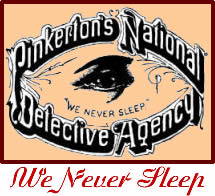
So how does a young man, freshly wed, get himself executed by a legend who was labeled a Robin Hood and a gentleman by commoners?
Well, as banks were long shots even for criminals of Jesse James’ caliber, or that of Butch Cassidy, his Wild Bunch and the Sundance Kid, who truly knew how to pull off a heist, stagecoaches with loot that only had a driver and one armed guard to protect it were the best next thing. And then there were trains. Everyone knew what train would pass where and when precisely, and some passed during night hours, carrying money from banks related to esteemed Union generals and various politicians in the express safe down in the baggage car. Interestingly enough, the safes were more often than not unusually low on cash.
By this time, the reward offered for the capture of Jesse and the members of his gang was off the roof. Realizing that trains were their, let’s say, preferable cup of tea, Alan Pinkerton, a leader of the Union’s Intelligence Service throughout the Civil War and currently head of the Pinkerton National Detective Agency that he founded in 1850 in Chicago, got an offer he could not refuse and turned to tracking down train robbers in the 1860s when the American Railroad Express hired him and his agency to assemble a special task force in order to put an end to it.
They paid a lot, but he was worth it, every penny of it. After all, his reputation preceded him. In 1861 he successfully uncovered a sinister plot and saved the life of the President of the United States, Abraham Lincoln.
Anyhow, the time had come and he was assigned in the 1870s to track down and capture the James brothers and the Youngers “dead or alive.” The agency’s code strictly forbade the Pinkerton’s agents from accepting reward money, so they were never really after the bounty, but the challenge was still greater than any other. Not to mention the fact that the capture alone of Jesse James and his gang, if executed efficiently, was about to bring a priceless reputation for him and his agency.
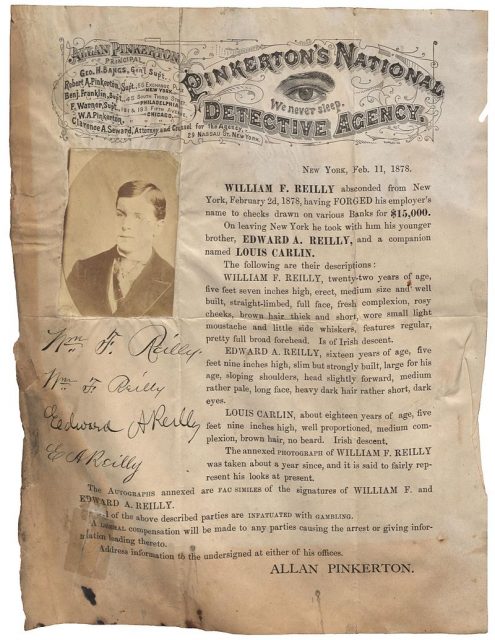
Turn down reward money, was yes, their first rule of conduct, but the Pinkerton Code set some other standards within its ranks. Such as, accept no bribes, never compromise with criminals or partner with local law enforcement agencies among the rest. Going first and foremost by their own rules, the agency devised a fine plan of how to catch their targets, as well as a practice that was revolutionary.
According to Larry Earl Schweikart, an American historian and professor of history at the University of Dayton who wrote the article “The Non-Existent Frontier Bank Robbery,” “Pinkerton detectives put together a special operations force of crack shots and expert riders who rode in separate cars with their horses, or even separate trains that trailed behind the ‘target.’ The Pinkertons could react rapidly to a robbery, ultimately making it too difficult to consistently hit trains.” This was perhaps the reason why safes in these so-called target trains were unusually low on cash, like on July 21, 1873, when Jesse’s gang hit the Night Express Train in Adair, Iowa, we previously mentioned and found only $3,000, and the same amount, more or less, when they robbed the safe of a train in Gad’s Hill, Missouri, on January 31, 1874. They were probably baits.
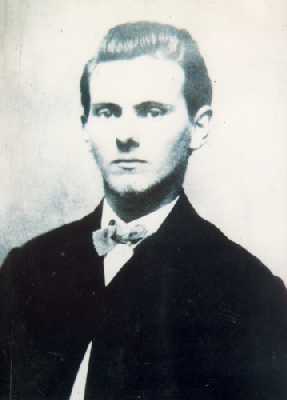
As for Jesse, according to Pinkerton’s official website, the Pinkerton Agency composed huge criminal databases out of everything that was related to the criminals they were after. And we mean everything! Mugshots, people’s recollections, witness accounts, hearsay, as well as every single newspaper story published that in one way or another was somehow about them and the things they did, praised, or condemned.
And there were a lot. Many believed they were heroes and tried to depict them as such. Others wished nothing else than their capture. But for Pinkerton, they were just tiny pieces of evidence and clues about their potential whereabouts, and he used them to track them down. It was a practice not heard of before and it proved to be effective. They were found at last.
In March 1874, one of their agents was tasked to infiltrate the home of Zerelda Samuel, Jesse’s and Frank’s mother. Some believed the agent was a former criminal who wished to redeem himself and could get inside their circles with ease. Some say his alleged criminal activities were just a cover-up story made up to help him get inside. Nonetheless, he did get in but never made the trip back out alive. His name was Joseph W. Whicher and he was found dead in a ditch, executed.
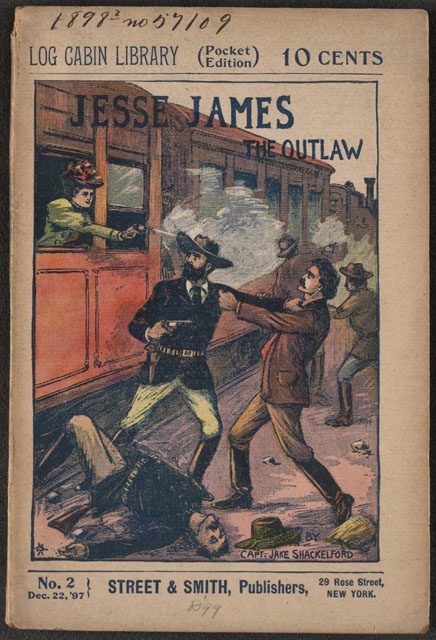
At the same time, according to multiple reports (William A. Settle, Marley Brant, Ted P. Yeatman, Homer Croy), two other agents Louis J. Lull, aka W. J. Allen, aka Lull, and Ed Daniels were sent for the Youngers. Both died in a gunfight, though Lull managed to kill one of the brothers, John Younger.
After these unfortunate events, Alan Pinkerton personally tried to catch Jesse himself and avenge the agents’ deaths but never did. On April 3, 1882, Jesse was assassinated by Robert Ford, in a cowardly fashion.
“Can’t figure it out, do you want to be like me or do you want to be me?” – Jesse James to Robert Ford.
He was 34 and he was killed at close range by a shot fired through the back of his skull, and by a man who he believed was his friend, but turned out to be something else. Pinkerton died two years after Jesse’s death. He had personally never managed to catch Jesse James, but his legacy lives on.
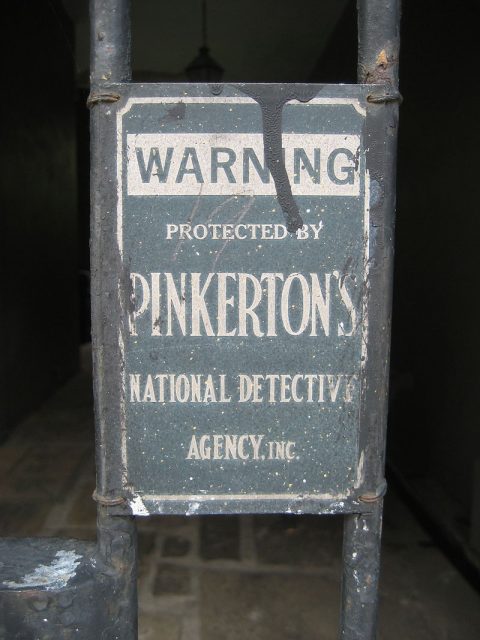
By the end of the following decade, the agency had 2,000 active agents and an additional 30,000 within its ranks. The Pinkerton Detective Agency was credited with disbanding the Wild Bunch, and by the 1960s had earned such glory and fame that it had no less but 60 offices nationwide. On one occasion in 1968 they were even called on to protect and escort Leonardo Da Vinci’s Mona Lisa across the Atlantic.
At the turn of the millennium, Securitas AB, probably the largest provider of security services across the world, bought both Pinkerton and Burns detective agencies, the same year that Pinkerton was celebrating its 150 years of existence and good service for people in need.
To honor the legacy, all that was salvaged over the years and was theirs to give, was given to the Library of Congress in Washington, D.C., accompanied by a statement that reads:
“We are honored that the Library of Congress considers our archives to be of historical significance and are proud to share the details of our organization’s past with the nation.” The agency was never known to be an all-boys club, was never a white-only organization either, and today, after almost 170 years of existence, Pinkerton Consulting and Investigations is still here if needed.
